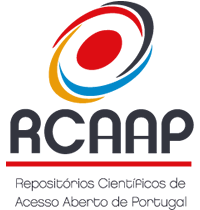PHYSICO-CHEMICAL CHARACTERIZATION OF MANIPULATION PHARMACY EFFLUENT
Keywords:
efluente, características físico-químicas, farmácia de manipulaçãoAbstract
Manipulation pharmacy are developing more and more, with innovative chemical substances generating a biggest amount of residues for the environment. The aim of the present study was to determine the characteristic physico-chemical of the effluent generated by a manipulation pharmacy and comparing the results according to the current environment legislation. The effluent analyzed was from laboratories’ use of internal control procedures and external quality of a manipulation pharmacy located in Pelotas. It was held during three months, six collections, it was analyzed ten parameter in each collection. The effluent was characterized as the concentration of Total Kjeldahl Nitrogen , Phosphorus, Chemical Oxigen Demand (COD), Surfactant, Iron, Oil and grease, pH, Turbidity, Color, Temperature. In the laboratory of external use the effluent one presented maximum values of Color in 5,2 mg Pt-Co/L; pH 9,1; Turbidity 613,66 UNT; Temperature 23,6°C; Total Kjeldahl Nitrogen 603,27 mg/L; Phosphorus 212.01 mg/L; COD 6435,00 mgO2/L; Surfactant 486,38 mg MBAS/L; Oil and grease 4352,94 mg/L. In the laboratory of internal use the Color presented maximum values of 3,90; pH 8,00; Turbidity 427,19 UNT; Temperature 23,5°C; Total Kjeldahl Nitrogen 2212,00 mg/L; Phosphorus 102,75 mg/L; COD 2613,60 mgO2/L; Surfactant 109,05 mg MBAS/L; Oils and grease 950,00 mg/L; Iron 4,70 mg/L. The results showed a necessity and the importance of the treatment effluent studied. This effluent launched in the environment without treatment, could cause many problems for the preservation of environment quality.Downloads
Download data is not yet available.
Downloads
Published
2016-09-22
How to Cite
Nunes, V. S. (2016). PHYSICO-CHEMICAL CHARACTERIZATION OF MANIPULATION PHARMACY EFFLUENT. VETOR - Journal of Exact Sciences and Engineering, 24(1), 43–52. Retrieved from https://furg.emnuvens.com.br/vetor/article/view/2013
Issue
Section
Articles











